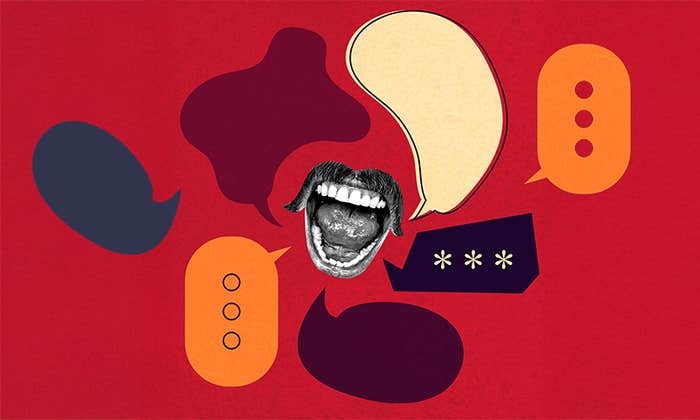Jessie Donaldson has played the flute for 26 years. One of her favorite pieces to play is “Romance No. 2” by Beethoven, a sweet and stately composition for flute, oboes, bassoons, horns, and violin. But mentally rehearsing the flute part is tricky for the occupational therapist, who lives in Auckland, New Zealand. Jessie lacks the ability to simulate sounds in her mind. When I ask her to conjure the music that she has mastered over decades, she says she can feel the fingerings she has practiced, but can’t hear the parts in her mind’s ear. In those moments, Jessie’s mind is filled with thoughts of the rhythm and structure of the music but none of the actual sounds her flute or the other instruments produce.
Going as far back as she can remember, this same silence permeates her memories, too. “I know what the sound of a laugh is,” she tells me, “but I can’t hear it in my mind. I have no memories with sounds.” Jessie only discovered that this was unusual when, by chance, she met a researcher who studies people like her.
If you think of a sound, such as a dog barking, a loved one’s voice, or a favorite tune, to what extent can you hear that sound in your mind? Not at all? As vividly as actually hearing it in real time and space? Somewhere in between? Researchers have long understood that people’s sensory imaginations vary widely. But it is only in the last decade that they have started paying close attention to those at the ends of this spectrum.
I know what the sound of a laugh is, but I can’t hear it in my mind.
Anthony Lambert, a professor of psychology at the University of Auckland, got curious about people who lack the ability to conjure sound in their minds a few years ago. “It began with a teaching exercise,” he says. Lambert held a seminar on aphantasia—a term coined in 2015 by a British neurologist named Adam Zeman to describe an inability to call up visual images in the mind. (Current estimates suggest that roughly 1 out of 25 people are aphantasics.) In the course of the class discussion, it dawned on Lambert that the ability to imagine sounds, a familiar part of everyday life, is often overlooked in the field. “It deserves study,” he thought. “And if we are to study it, we probably need a name for it.”
In a 2021 study with Rish Hinwar, then a graduate student at University of Auckland, Lambert officially introduced the term “anauralia”—the auditory analogue to aphantasia. Lambert and Hinwar found a significant overlap between the two conditions. Their small sample of 128 study participants included 34 aphantasics, of whom 82 percent were also anauralic. Only one of the anauralics could produce normal visual imagery in their mind. (The researchers also found significant overlap between a subset of individuals in their sample who had hyper-vivid visual and auditory imaginations.) Previous research had already described how individual differences in both visual and auditory imagination are predicted by the amount of gray matter in a specific brain region—called the supplementary motor area, which is involved in action planning and execution—suggesting a neurological link between the two.
The ability to simulate sounds in one’s mind is believed to be involved in a range of everyday tasks, including reading and various forms of planning, thinking, and decision-making. For instance, some research suggests that we use inner dialogue to plan tasks, think critically, solve problems, and even control our impulses.
Zoé Mi Schelp, a Ph.D. candidate in Lambert’s lab, wondered what impact anauralia might have on working memory. “We use [auditory imagination] all the time—to remember phone numbers, credit cards, and shopping lists,” says Schelp. Could an inability to imagine sounds be associated with an inability to remember more broadly? Aphantasia had already been linked with another newly identified but rare syndrome known as Severely Deficient Autobiographical Memory, or SDAM for short. People with SDAM can’t relive past experiences in their minds, and a preliminary survey shows just over half of a sample of 2,000 SDAM individuals also have aphantasia.
In a tiny and as of yet unpublished study, Lambert and Schelp brought together 10 anauralics and 10 participants with standard auditory imaginations to perform a common working memory test. They presented participants with word lists to memorize and repeat in the correct order. An example is a sequence of similarly-sounding words—cab, can, cad, cap—shown to a participant one at a time with a fleeting blank screen in between.
It’s possible representations of sound lie below the level of consciousness.
After seeing the words, the participant is cued to recite them back. Research tells us that it is more challenging to remember a series of words that sound alike. But Schelp and the rest of Lambert’s team hypothesized that individuals with anauralia, who presumably do not rely on sound patterns for memory recall, might not be affected in the same way. The results did not bear this out: All participants were similarly challenged. “It led us to the idea that maybe anauralics struggle to imagine sounds within their inner ear but are still able to remember sounds that they have spoken; they still have the inner voice,” speculates Schelp.
It is also possible that in people with anauralia, sensory representations of sound simply lie below the level of consciousness, says Lambert. He points to the neuroimaging work that found that aphantasics display weaker connections than those with hyper-vivid visual imagery between visual sensory areas of the brain and prefrontal regions responsible for regulating thoughts, actions, and emotions.
“So, the sensory areas might be working, but the altered interactions with other brain regions might mean that those sensory representations are not present in consciousness. We might see something similar with auditory sensory areas as well,” says Lambert. He is hoping to investigate this possibility with an upcoming fMRI study.
But the results raise another question: How do we know that what anauralics describe is actually a distinct condition and not simply a different way of understanding inner experience? We might look to aphantasia for answers. Joel Pearson at the University of New South Wales, in Australia, has together with his team identified a measurable physiological characteristic of people who have it: Unlike the average person, their pupils don’t involuntarily contract when they imagine bright shapes. Gage Quigley-Tump, a Ph.D. candidate in Lambert’s lab, recently completed data collection for a study exploring whether the pupil test can similarly identify anauralics.
As for Jessie, she experiences both anauralia and aphantasia. “Dull colors and no faces,” she tells me when I ask her about her dreams. “I don’t believe I have conversations with these faceless people.” Jessie recalls feeling agitated in the dreams, troubled by her inability to engage with the figures she encounters—but this frustration doesn’t seem to seep into her waking life. “I don’t think it impacts me,” she says. It makes sense. Anauralia is not a disorder but rather a variant of normal experience. When chatting with those who have vivid sensory imaginations, Jessie sometimes wonders, “What would that be like?” ![]()
Lead image: Marijus Auruskevicius / Shutterstock




























